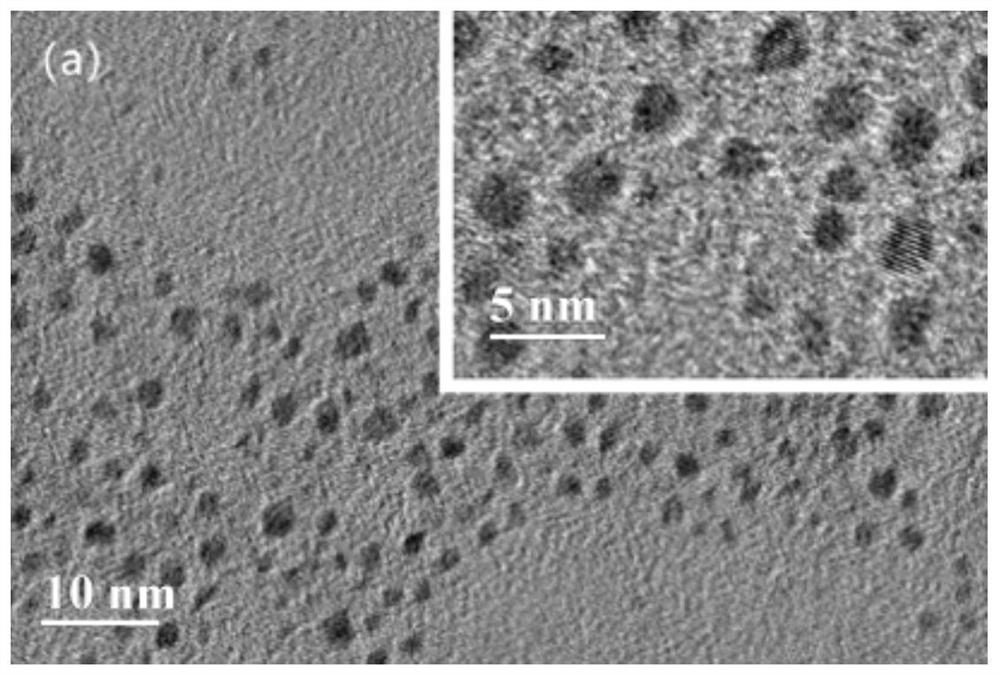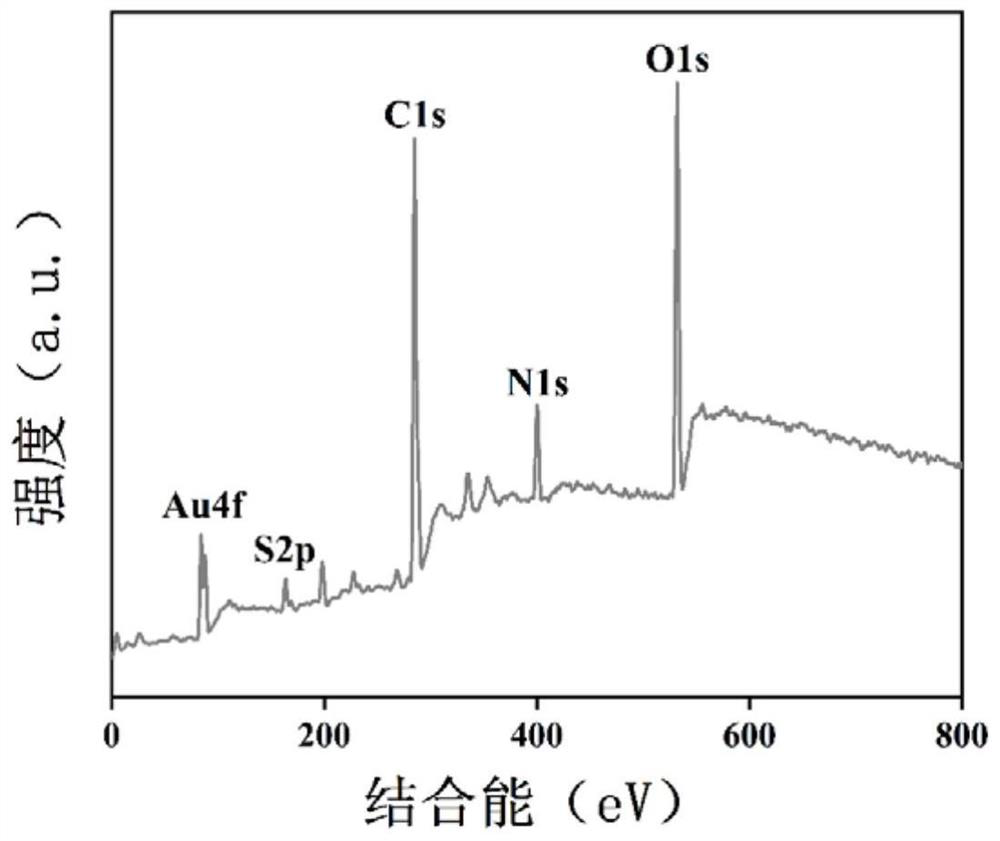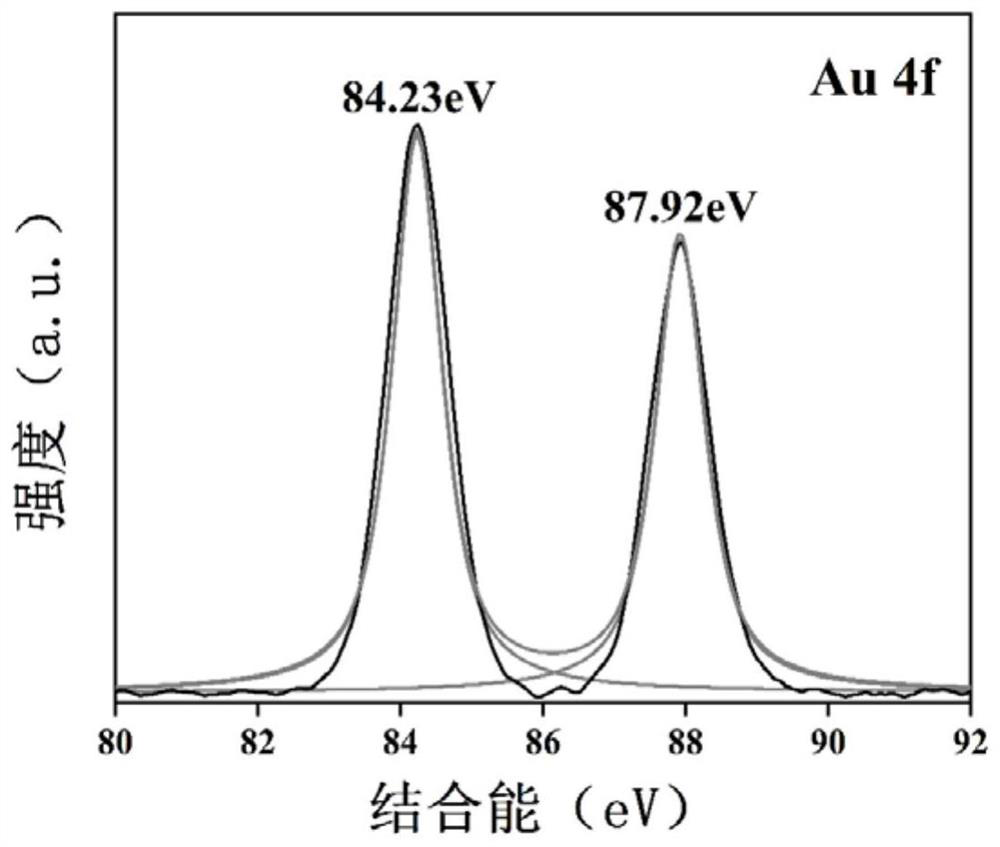Method for detecting ascorbic acid based on gold cluster and TMB colorimetric fluorescence double signals
A technology of ascorbic acid and gold clusters, applied in the field of fluorescence analysis and detection, can solve the problems of large background signal interference and large environmental fluctuation, and achieve the effects of low detection limit, good accuracy and mature synthesis technology.
- Summary
- Abstract
- Description
- Claims
- Application Information
AI Technical Summary
Problems solved by technology
Method used
Image
Examples
Embodiment 1
[0040] Preparation of AuNCs of the present invention: Add 5ml HAuCl to a clean round bottom flask 4 4H 2 O (20mM), 1.5mL of freshly prepared glutathione solution (100mM) and 43.5mL of ultrapure water, these solutions were stirred at room temperature for 30 minutes to mix thoroughly, and then the mixed solution was heated to 70°C, and After being kept at high temperature for 48 hours, the obtained AuNCs solution was light yellow under visible light, and emitted red fluorescence under 365nm ultraviolet light. It was stored at 4°C and used directly for subsequent experiments.
Embodiment 2
[0042] MnO of the present invention 2 Preparation of nanosheets: 1.0g KMnO4 and 0.15g MnSO 4 ·H 2O was dissolved in 70 mL of deionized water, stirred for 15 minutes to dissolve the mixture completely, then the mixture was placed in a polytetrafluoroethylene (PTFE)-lined hydrothermal reactor, and reacted at 200 °C for 12 hours, and the final solid product was After centrifugation and washing three times to remove possible impurities, the washed solids were finally placed in an oven at 100°C for 12 hours, and the obtained material was preserved and stored for later use.
Embodiment 3
[0044] Establish standard curves for fluorescence detection of ascorbic acid and colorimetric detection of ascorbic acid: first, prepare standard solutions of ascorbic acid with a concentration gradient of 0-200 μM, then mix 3ml TMB solution (2mM) and 600μL MnO 2 The suspension of nanosheets (4 mg / mL) was sequentially added to 80 mL of HAc-NaAc (0.2 mM) buffer solution at pH 4, stirred and incubated at room temperature for 1 hour, and the mixture was filtered to remove MnO 2 Nanosheets, save the obtained blue oxTMB solution for later use, mix 200μLAuNCs (200μM), 1mL oxTMB (72μM, converted from TMB) and AA standard solutions of different concentrations, and the mixed solution is incubated at room temperature for 10 minutes before fluorescence value and colorimetric value tend to be stable, measure the relative fluorescence intensity and ultraviolet absorption intensity, respectively record the fluorescence emission peak and ultraviolet absorption peak of the solution at 572nm an...
PUM
 Login to View More
Login to View More Abstract
Description
Claims
Application Information
 Login to View More
Login to View More - R&D
- Intellectual Property
- Life Sciences
- Materials
- Tech Scout
- Unparalleled Data Quality
- Higher Quality Content
- 60% Fewer Hallucinations
Browse by: Latest US Patents, China's latest patents, Technical Efficacy Thesaurus, Application Domain, Technology Topic, Popular Technical Reports.
© 2025 PatSnap. All rights reserved.Legal|Privacy policy|Modern Slavery Act Transparency Statement|Sitemap|About US| Contact US: help@patsnap.com



